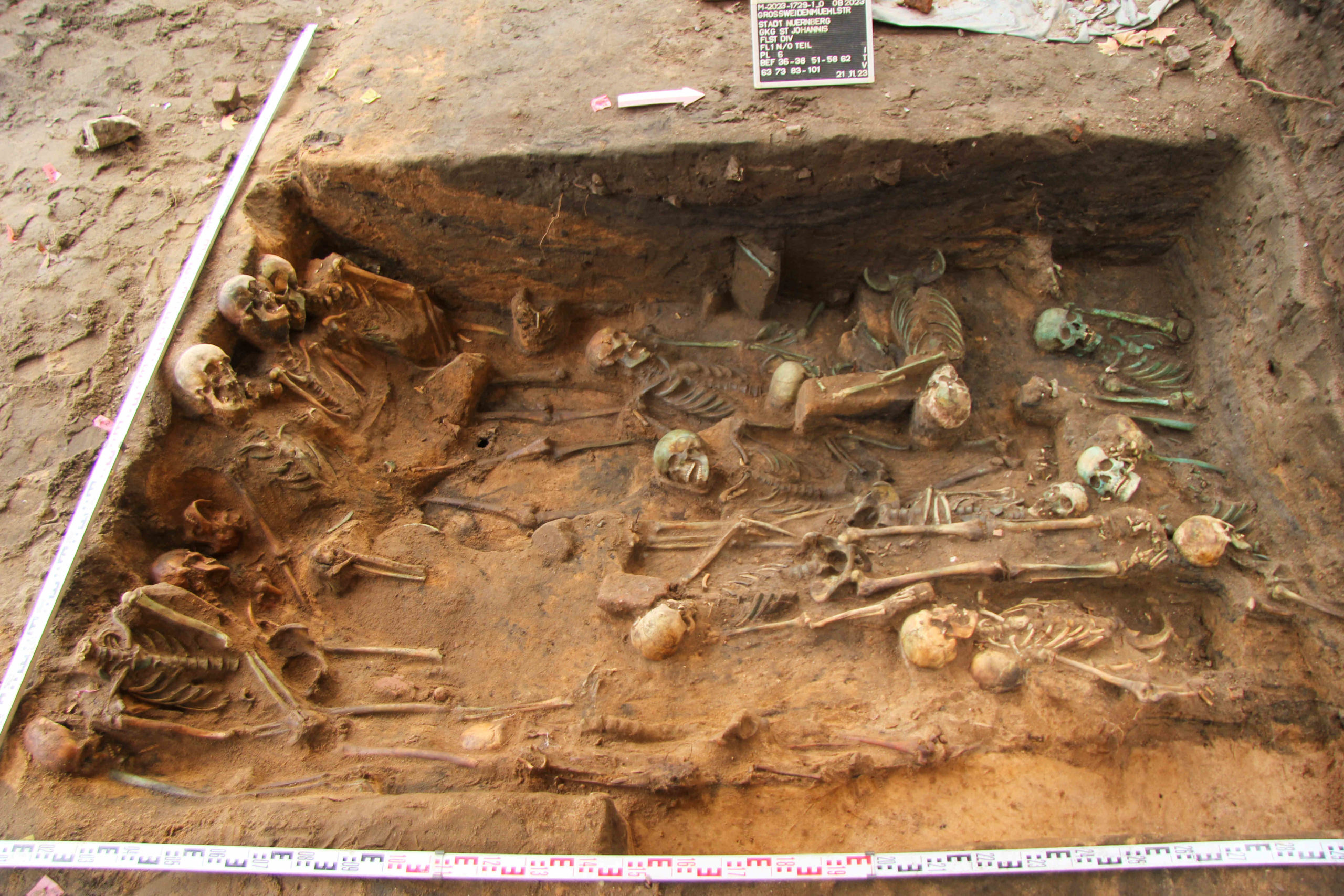
Archaeologists in Southern Germany have uncovered ancient burial sites that hold the remains of over a thousand people. These burial pits could be the largest mass grave ever found in Europe. The discovery was made during excavations prior to construction work in Nuremberg.
The pits contain hundreds of skeletons of men, women, and children, dating back to the late 15th to early 17th centuries. Alongside the remains, archaeologists also found pieces of pottery and silver coins in two of the three pits they fully investigated.
Radiocarbon dating of the pottery links it to plague outbreaks from 1622 to 1634, while the coins are from around 1619, as stated by the archaeological excavation company In Terra Veritas.
Plague outbreaks between 1533 and 1634 killed 30,000 people
Between 1533 and 1634, Nuremberg faced several plague outbreaks that led to the deaths of around thirty thousand individuals, as mentioned in the statement. Due to the high number of casualties, authorities decided to bury the bodies in mass graves outside the city’s regular churchyards.
Melanie Langbein, from Nuremberg’s Department for Heritage Conservation, explained to CNN that these individuals were not buried in traditional cemeteries despite Nuremberg having specific plague burial grounds.
Europe's largest mass grave with 1,000 bodies found in Nuremberg, Germany pic.twitter.com/S3unxgZqlB
— David (@David1250897231) March 6, 2024
This situation arose because of the urgent need to quickly bury a large number of deceased individuals without following the usual Christian burial customs.
Medieval Christians were typically buried with their head pointing West and feet towards the East, a tradition associated with the belief in seeing Christ’s return from the East during the Last Judgment, as reported by Live Science. However, recent excavations uncovered a different burial style.
Archaeologists found skeletons seated in various directions, stacked closely on top of each other to maximize space usage. Additionally, bodies were discovered lying on their sides, with infant remains in the spaces between them. This indicates a change from the traditional Christian burial practices observed during that time.
Two pits excavated with 280 and 150 bodies
The remains in some of the pits had turned green over time due to deposits from nearby metal processing plants, as stated in the released information.
Out of the eight pits discovered, only three have been completely excavated. Hence, remains of individuals have only been accounted for in three of them. Archaeologists determined that one pit contained 280 bodies, but there were signs that some remains might have been moved or disturbed following the initial burial.
In another pit, they found 150 bodies. However, the accuracy of this count is uncertain due to a World War II bomb explosion nearby in 1943, which caused some skeletons to be damaged or dispersed.
Archaeologists have counted and taken out around a thousand bodies from the site, but they expect that this number will increase to over 1,500 in the upcoming weeks as they continue their excavations.
See all the latest news from Greece and the world at Greekreporter.com. Contact our newsroom to report an update or send your story, photos and videos. Follow GR on Google News and subscribe here to our daily email!



